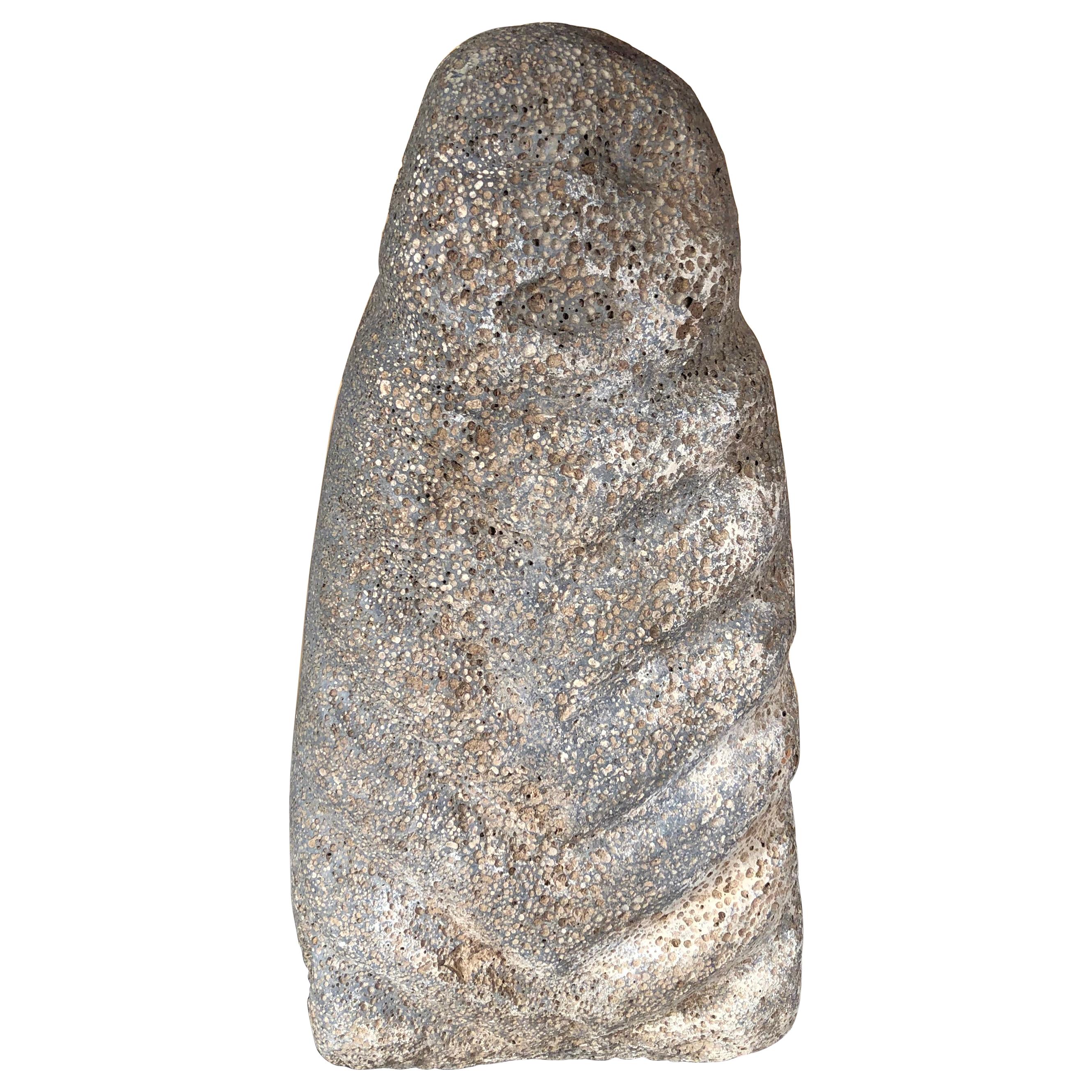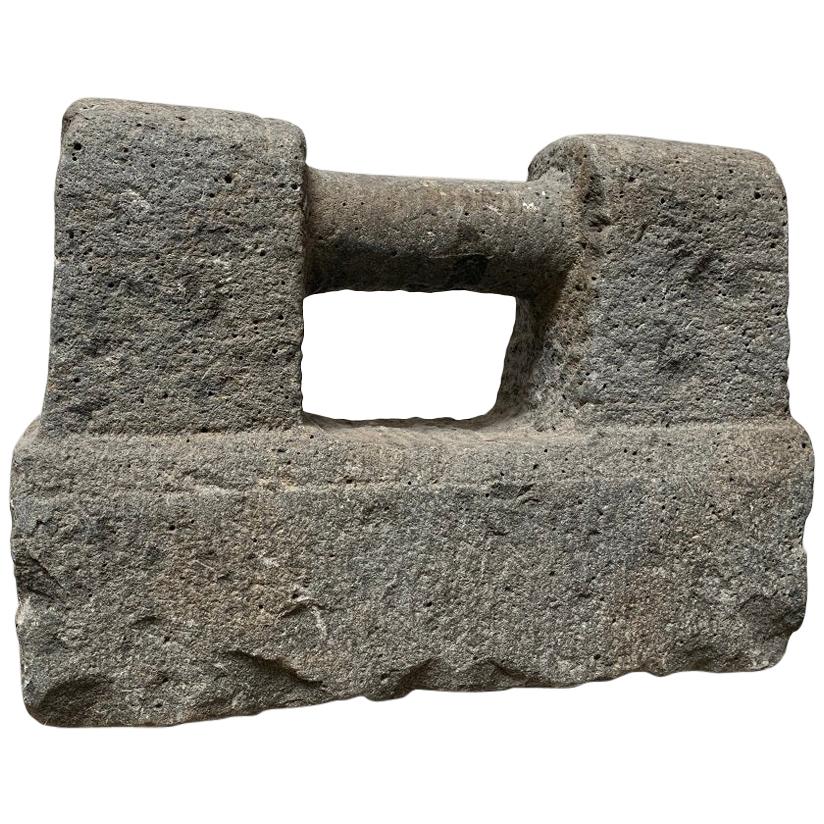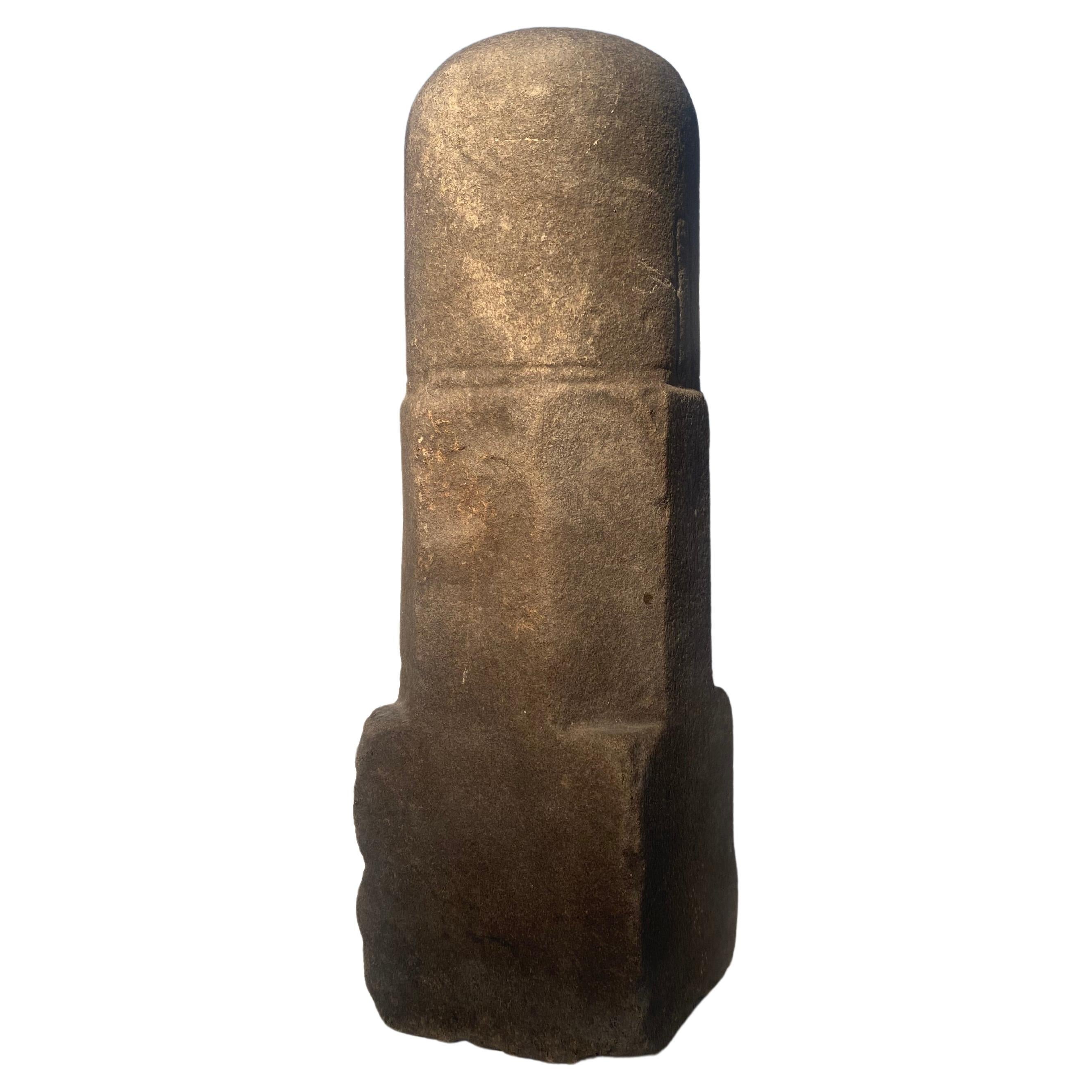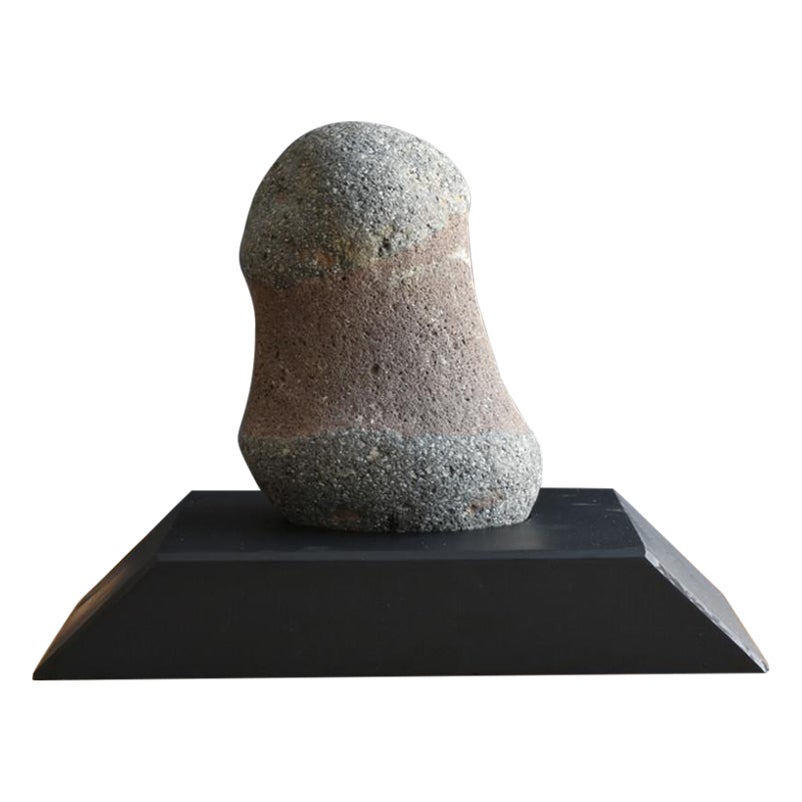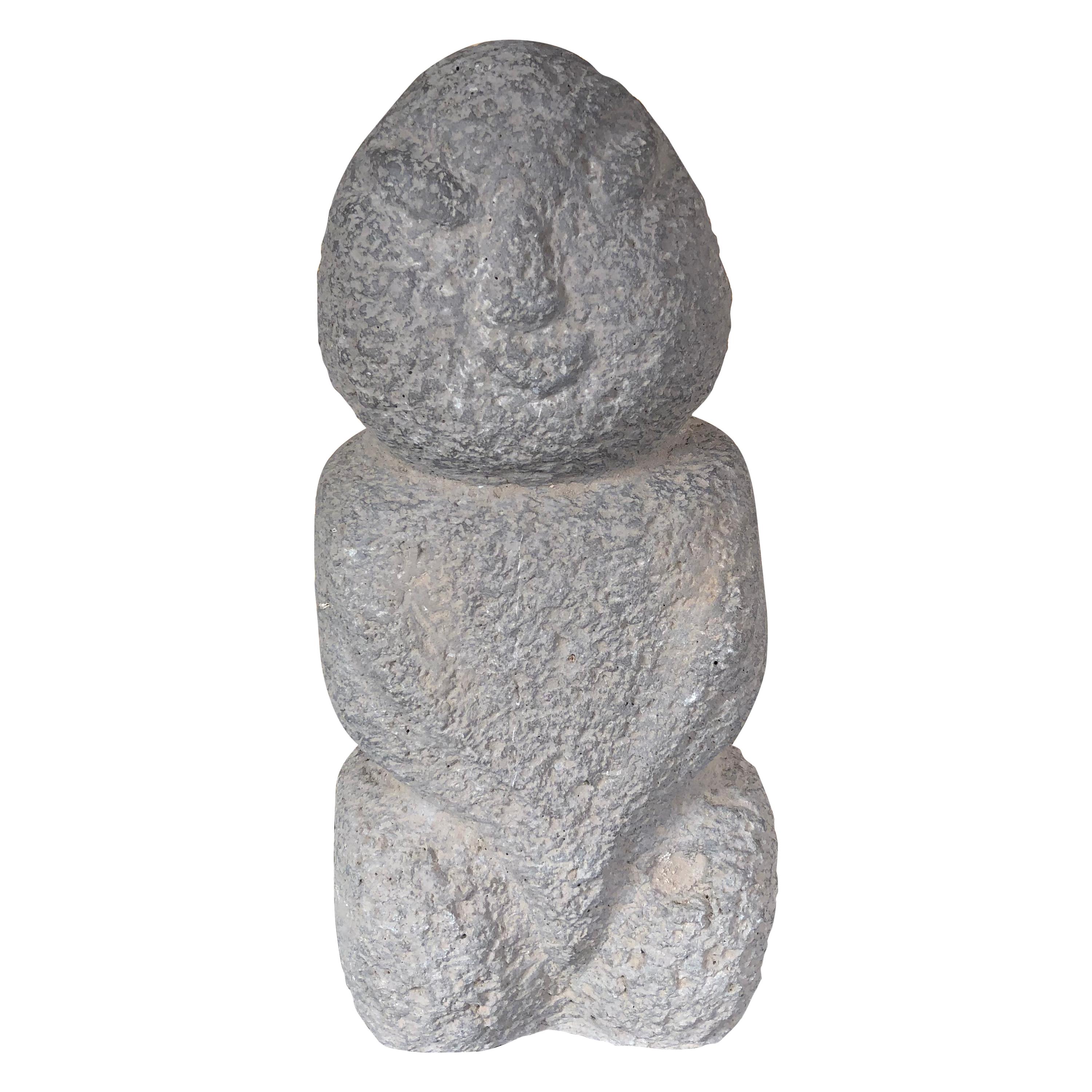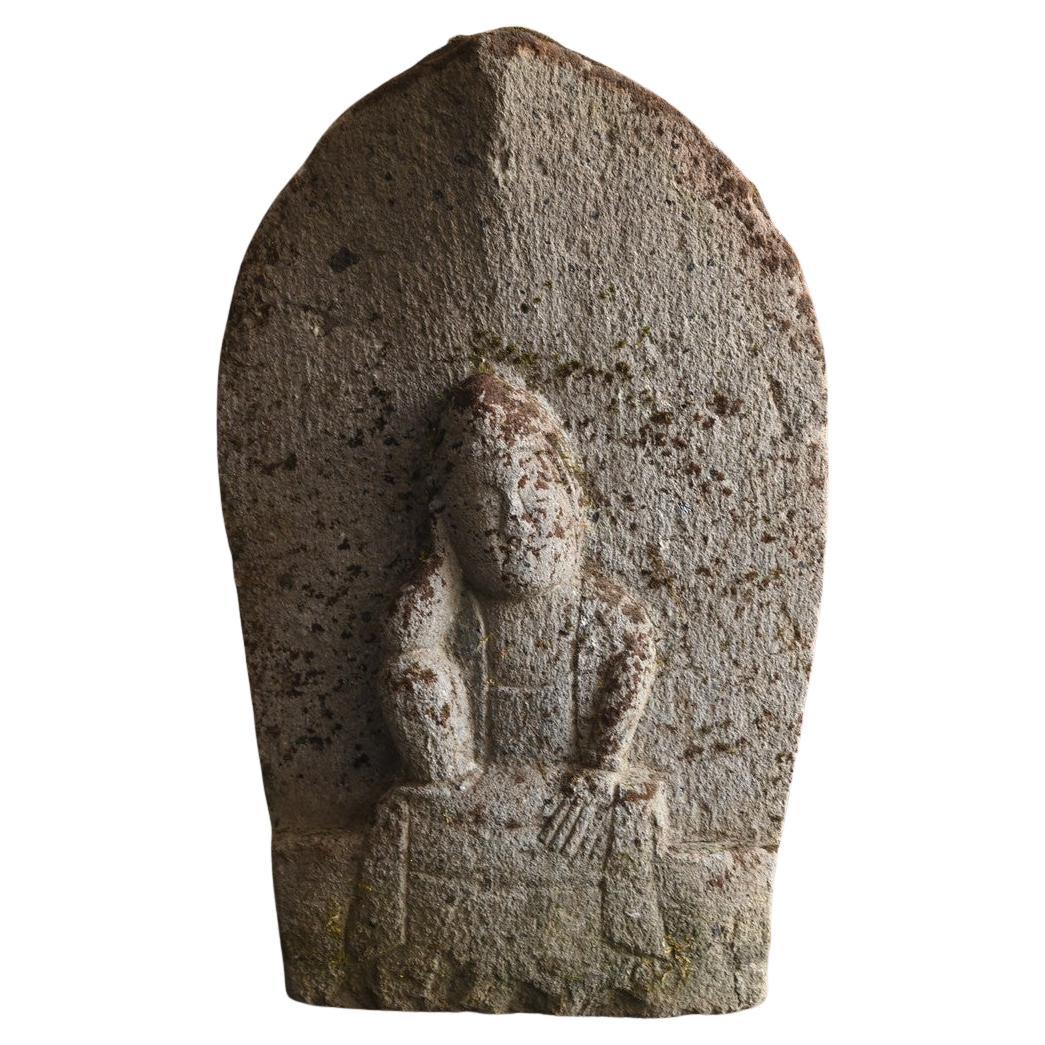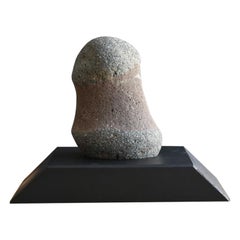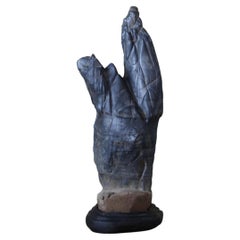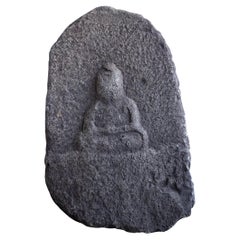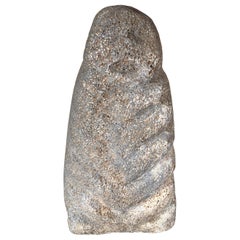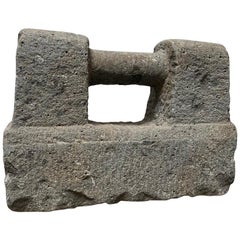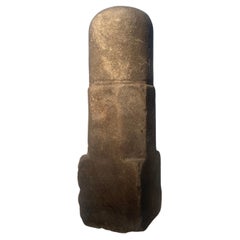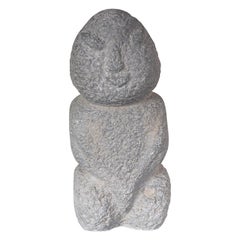Items Similar to Japanese antique stone objects/rituals/Penis-shaped figurine/before the Edo
Want more images or videos?
Request additional images or videos from the seller
1 of 20
Japanese antique stone objects/rituals/Penis-shaped figurine/before the Edo
$1,100
£829.09
€958.28
CA$1,554.29
A$1,698.90
CHF 894.77
MX$20,889.61
NOK 11,182.15
SEK 10,520.20
DKK 7,154.15
About the Item
This is an old stone object from Japan, a sculptural piece called a “stone rod” that depicts male genitalia. Based on its shape, material, and discoloration, it is believed to have been made before the Edo period. Since ancient times, wooden and stone objects modeled after male genitalia have been dedicated in various parts of Japan to pray for the prosperity of descendants, protection from fire, and abundant harvests. In particular, in the Tohoku region, there was a custom of tying wooden male and female genitalia to the attic of a newly built house, illustrating how closely daily life and faith were intertwined.
This piece is also considered to be an extension of such culture, and it is likely that it existed not merely as a sculptural object but as a symbol of wishes and prayers. It exudes a simple yet powerful presence. There is discoloration from blackening from the top to the middle, which is likely due to prolonged exposure to smoke and soot from being buried in a hearth or earthen floor. Such natural color gradients are accidental beauties born over time, possessing a depth of flavor that cannot be artificially replicated.
The silhouette is very minimalistic and resembles abstract sculpture. Despite its folk art background, it has high aesthetic value as interior decoration and harmonizes with a variety of spaces, both Japanese and Western. In modern living spaces, it can be placed quietly as a sculptural object that adds warmth and playfulness to sterile modern interiors, or as a spiritual symbol, creating meaningful space.
Additionally, this piece can stand on its own without being embedded in the ground, allowing it to be displayed as an object on the floor or a shelf. Up close, the texture of the stone stands out clearly, and when touched by hand, the richness of the texture developed over many years is conveyed. From a distance, the sculptural beauty stands out, stimulating the imagination of the viewer.
This piece, which could be described as “the form of prayer,” has a folk art background yet possesses the power to quietly blend into modern life. Each time you see it, you are drawn to contemplate the vast workings of nature and the aspirations of people that have continued across the ages—a piece with such profound charm.
Size: Approximately 14.7 cm in diameter × 45.5 cm in height
Weight: 16.85 kg
Item Number: SC126
【We mainly sell old Japanese items, but also items from around the world.
We have seen tens of thousands of items so far.
Using that experience, we list appealing items here.
This is something we can do because of our long experience.
If you are looking for something special, we encourage you to purchase it on our site.】
- Dimensions:Height: 17.92 in (45.5 cm)Diameter: 5.79 in (14.7 cm)
- Style:Other (Of the Period)
- Materials and Techniques:
- Place of Origin:
- Period:
- Date of Manufacture:Before the 19th century
- Condition:
- Seller Location:Sammu-shi, JP
- Reference Number:1stDibs: LU5487245993042
About the Seller
5.0
Platinum Seller
Premium sellers with a 4.7+ rating and 24-hour response times
Established in 2015
1stDibs seller since 2020
1,626 sales on 1stDibs
Typical response time: 7 hours
- ShippingRetrieving quote...Shipping from: senzoku, Japan
- Return Policy
Authenticity Guarantee
In the unlikely event there’s an issue with an item’s authenticity, contact us within 1 year for a full refund. DetailsMoney-Back Guarantee
If your item is not as described, is damaged in transit, or does not arrive, contact us within 7 days for a full refund. Details24-Hour Cancellation
You have a 24-hour grace period in which to reconsider your purchase, with no questions asked.Vetted Professional Sellers
Our world-class sellers must adhere to strict standards for service and quality, maintaining the integrity of our listings.Price-Match Guarantee
If you find that a seller listed the same item for a lower price elsewhere, we’ll match it.Trusted Global Delivery
Our best-in-class carrier network provides specialized shipping options worldwide, including custom delivery.More From This Seller
View AllJapanese antique appreciation stone/penis-shaped stone/strange stone
Located in Sammu-shi, Chiba
We have a unique Japanese aesthetic sense.
And only we can introduce unique items through our purchasing channels in Japan and the experience we have gained so far, in such a way that no one else can imitate.
This is a stone carved in the image of an old Japanese male genitalia.
There is a possibility that it was a natural stone that had been carved by the running water of a river for a long time, but it is more likely that it was carved artificially.
In Japan, objects in the shape of male and female genitalia have been made for a long time. The materials used are stone and wood.
In the case of stone, some are made from 3,000 yen to 4,000 years ago.
At that time, it was used in ceremonies to pray for the prosperity of descendants.
In the case of this stone, it was probably dedicated to shrines and village shrines in hopes of prosperity of descendants.
This stone is believed to be from before the Edo period.
Because two types of rocks are mixed, the color contrast is beautiful.
I prepared the pedestal.
Also, there are some shallow cracks, but there is no need to worry about breaking the stone.
Wooden penises...
Category
Antique Early 18th Century Japanese Other Scholar's Objects
Materials
Stone
Japanese antique Kannon stone statue/Edo period/18th to 19th century
Located in Sammu-shi, Chiba
Introducing a stone Buddha of Nyoirin Kannon, created in the mid to late Edo period (circa 1750-1850).
The material used is granite or andesite, and the natural weathering of the sto...
Category
Antique Early 19th Century Japanese Edo Garden Ornaments
Materials
Stone
Japanese "Suiseki" Makkouseki from Ehime
Located in Sammu-shi, Chiba
This is a stone mined in Japan.
Not only in China but also in Japan from ancient times, rocks in the mountains have been shaved and stones for viewing have been quarried.
Such stone...
Category
Mid-20th Century Japanese Showa Scholar's Objects
Materials
Stone
Edo Period Stone Buddha/1600’s/Japanese Antique Buddha Statue/Garden Ornament
Located in Sammu-shi, Chiba
This stone Buddha sculpture, believed to date back to the early Edo period or earlier, depicts Jizo Bosatsu in a seated pose.
Crafted from granite, it showcases the natural effects ...
Category
Antique Early 17th Century Japanese Edo Sculptures and Carvings
Materials
Stone
Japanese Edo Period Kannon Stone Buddha/1700-1850/Garden Ornament
Located in Sammu-shi, Chiba
We are pleased to present a simple stone Buddha of Kannon Bosatsu, made in Japan during the Edo period (circa 1700-1850).
Kannon Bosatsu is known in Buddhism as a merciful savior wh...
Category
Antique 18th Century Japanese Edo Garden Ornaments
Materials
Stone, Granite
Japanese antique Shigaraki ware vase/1400-1573/Wabi-sabi vase
Located in Sammu-shi, Chiba
It is "Shigaraki ware".
Shigaraki ware is a historic kiln located in Shiga Prefecture.
(The Shigaraki ware kiln is circled in red in the image.)
It is said to have originated in the ...
Category
Antique 15th Century and Earlier Japanese Other Jars
Materials
Pottery
You May Also Like
Chinese Ancient Hongshan Culture Stone Sculpture, 4700-2900 BC
Located in South Burlington, VT
China, a fine archaic human effigy hand-carved from a granular medium to dark gray volcanic stone with six (6) "V" sections carved front. Neolithic period, Hongshan culture...
Category
Antique 15th Century and Earlier Chinese Antiquities
Materials
Stone
18th Century Chinese Stone Artefact
Located in Vosselaar, BE
This double sided hitching post was used to stall horses for short period of times. They are found throughout China and made during centuries. This hardstone example dates from the 1...
Category
Antique Early 18th Century Chinese Sculptures and Carvings
Materials
Stone
Antique Oriental Phallic Lingam Stone
Located in Schellebelle, BE
Beautiful antique Sandstone Shiva Lingam from South-East-Asia,
Khmer Period, 12-13 th Century, Thailand-Cambodia Region,
this Hindu magical stone was used as a fertility and well-bei...
Category
Antique 15th Century and Earlier Thai Sculptures and Carvings
Materials
Sandstone
Chinese Stone Fertility Sculpture, 4700-2900 BC
Located in South Burlington, VT
China, a fine archaic male effigy hand carved from a granular medium to dark gray stone. Neolithic period, Hongshan culture (circa 4700-2900 BC)
Likely a fertility fetish. Note the pecked surfaces and the stone carved hair line top knot.
Quality: Fine original condition, no repairs, as collected. Dark varied patina from appropriate age.
Dimensions: 13.5 inches tall and 6 inches width.
About Hongshan Culture:
The Hongshan culture was a Neolithic culture in northeastern China. Hongshan sites have been found in an area stretching from Inner Mongolia to Liaoning, and dated from about 4700-2900 BC. The culture is named after Hongshanhou, a site in Hongshan District, Chifeng. The Hongshanhou site was discovered by the Japanese archaeologist Torii Ryuzo in 1908 and extensively excavated in 1935 by Kosaku Hamada and Mizuno Seiichi.
Provenance:
Our private collection and accompanied by our Lifetime Guarantee of Authenticity. Originally collected in the area of Chifeng City, Inner Mongolia.
In addition, our Hongshan stone effigy...
Category
Antique 15th Century and Earlier Chinese Antiquities
Materials
Stone
Oriental Style Hand Carved Stone
Located in Marbella, ES
Oriental Style Hand-Carved Stone.
Category
Mid-20th Century Asian Paperweights
Materials
Stone
Asian Scholar Stone
Located in Winnetka, IL
Gongshi (chinese)also known as scholars rocks are naturally occurring or shaped rocks which are traditionally appreciated by chinese scholars. they can be any color and are in chines...
Category
Early 20th Century Chinese Scholar's Objects
Materials
Stone
$1,500
